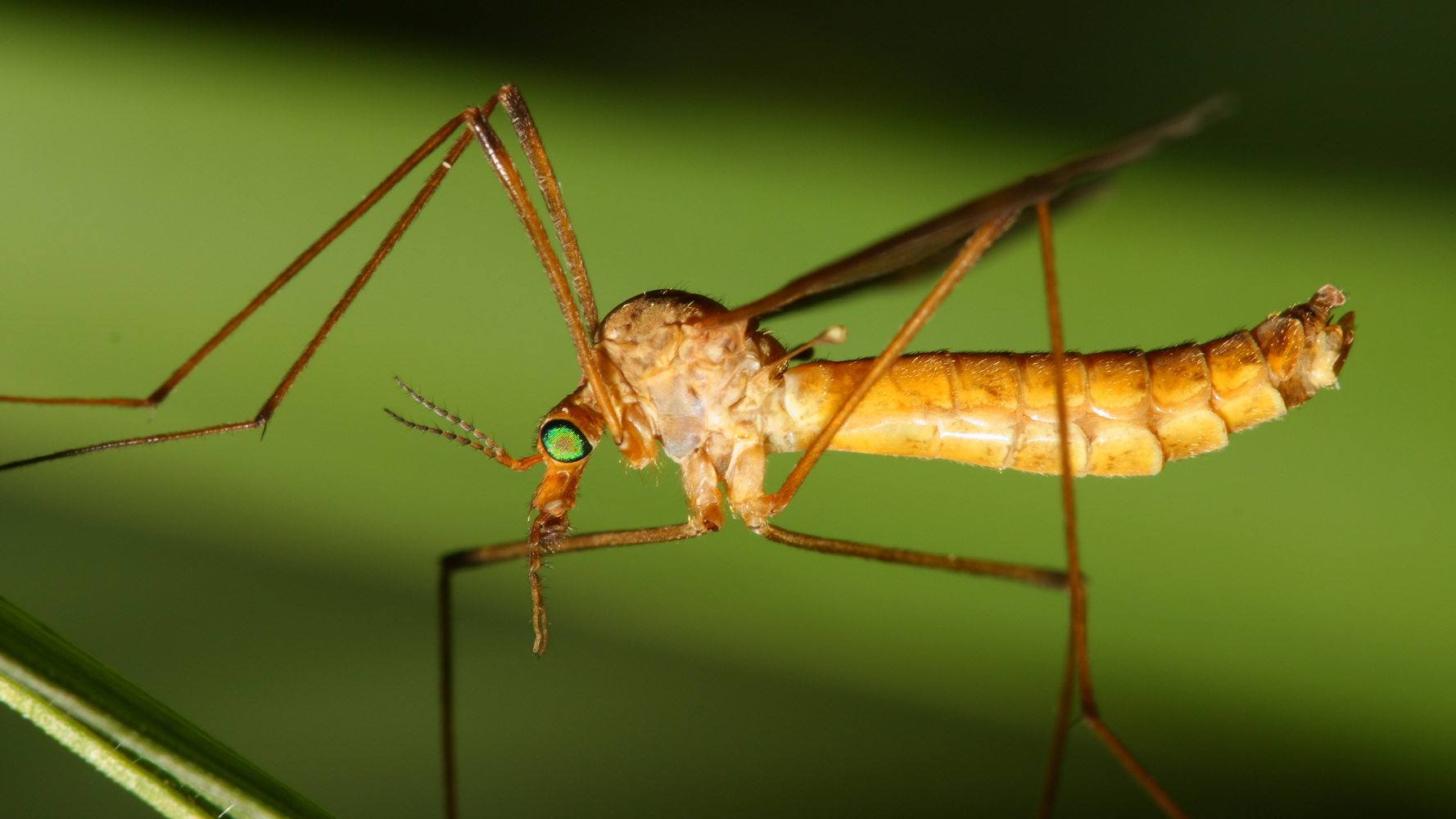Crane Fly – Tipula bicornis

Crane Fly Tipula bicornis
Tipulidae, often called crane flies in their adult stage, is the largest family of true flies. Crane flies form a highly diverse group of insects, both in number of species and in larval habitats, which extend from aquatic to terrestrial. The body plan or morphology of crane flies is rather simple. An elongate body, one pair of narrow wings, and long, slender legs characterize them. The body size ranges from 5 to 50 mm and can be described as mosquito-like. They are often mistaken for mosquitoes, but they belong to a group of harmless flies. They do not sting or bite.
Some crane flies require special habitat conditions, and their presence or absence can be used as an indicator of environmental quality. Fishermen use larvae of some large crane flies as bait. Several species of crane flies are important agricultural pests; their larvae feed on seedlings of field crops and if abundant can be destructive to lawns, rangelands, rice fields, and golf courses.
— Chen Young, Crane Flies of Pennsylvania
Flies Main | Flies Index | Tachinidae | Syrphidae | Bee Flies | Blow Flies | Flesh Flies
